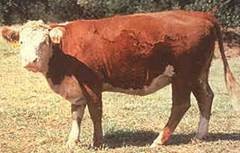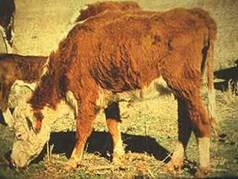Source: Cow-Calf Corner is a weekly newsletter by the Oklahoma Cooperative Extension Agency
Nov. 25, 2019
More, heavier cattle placed in feedlots in October
By Derrell S. Peel, Oklahoma State University Extension livestock marketing specialist
The latest USDA Cattle on feed report pegs Nov. 1 feedlot inventories at 11.83 million head in feedlots with a capacity of 1000 head or more. This is 101.2% of last year and up 4.8% from October as feedlot inventories increase to a seasonal peak. After two months of year over year decreases in cattle on feed totals, large October placements pushed Nov. 1 inventories back above year earlier levels. Annual average feedlot inventories (twelve month moving average) peaked in August but there is a chance that strong placements in the next few months could push to a higher average total. In other words, feedlot inventories are close but may not yet be quite at a cyclical peak.
October placements were 110.2% of one year ago, a bit lower than the average of a wide range of pre-report estimates. Several factors contributed to the relatively large October placement number including the fact that the number was compared to a small 2018 value; indications of general delays in feeder cattle marketing this fall; and additional August and September delays related to the August packing plant fire. October marketings were 99.4% of last year, in line with pre-report expectations. Total placements in the six months from May to October were down 0.4% year over year while six-month total marketings were up 0.5%.
October placements were dominated by heavy weight feeders. Placements of feeder cattle over 800 pounds were up 29.5% year over year with placements 700-800 pounds up 14.9% compared to one year ago. Meanwhile, placement of feeders under 600 pounds were down 6.3% year over year. In the three months from August-October, placements of feeders over 700 pounds were up 4.6% year over year while placements of cattle less than 700 pounds were down 2.8%. This means that feedlots will be somewhat front-loaded for the next few months.
Regional contrasts are apparent in the latest cattle on feed report. October placements in Texas were up 14% year over year leading to a November on-feed total 107% of last year. In Colorado, a 23 percent increase in placements supported a feedlot inventory 105% of last year. Kansas placed 14% more cattle in October with a November feedlot inventory 103% of last year. By contrast, Nebraska placed only 3% more cattle in October compared to one year ago, leading to a Nov. 1 feedlot total 95% of last year. Iowa had October placements up 7% year over year with a Nov. 1 on-feed total 94% of one year ago.
Finally, my recent travels in Oklahoma and the Texas Panhandle have confirmed that the frustratingly slow wheat pasture development is finally making progress. I have noted a growing number of stockers on wheat recently and more wheat that appears nearly ready for turnout. Groups of cattle stockpiled on dry pasture waiting for wheat pasture are common. Western Oklahoma, in particular remains pretty dry and in some cases wheat stocking rates are lighter than usual.
Growing bred replacement heifers
By Glenn Selk, Oklahoma State University Emeritus Extension animal scientist
Bred replacement heifers that will calve in January and February need to continue to grow and maintain body condition. Ideally, two-year-old heifers should be in a body condition score 6 at the time that their first calf is born. See example below of a heifer in body condition 6.

This allows them the best opportunity to provide adequate colostrum to the baby, repair the reproductive tract, return to heat cycles, rebreed on time for next year, and continue normal body growth. From now until calving time, the heifers will need to be gaining about 1 pound per head per day, assuming that they are in good body condition going into the winter months. In contrast, if heifers are allowed to lose body condition and calve in a body condition score of 4 or less (see picture below), they will produce less colostrum and their calves will have a higher likelihood of getting calf diarrhea.

Plus thin heifers may take 30 to 60 days longer to return to heat cycles. Therefore, they will calve late next year or be open (non-pregnant) at preg checking next fall.
Heifers will need supplemental protein, if the major source of forage in the diet is bermudagrass or native pasture or grass hay. If the forage source is adequate in quantity and average in quality (6 – 9% crude protein), heifers will need about 2 pounds of a high protein (38 – 44% CP) supplement each day. This will probably need to be increased with higher quality hay (such as alfalfa) or additional energy feed (20% range cubes) as wet winter weather adds additional nutrient requirements.
Wheat pasture (if adequate rainfall produces growth) can be used as a supplement for pregnant replacement heifers. Using wheat pasture judiciously makes sense for pregnant heifers for two reasons. Pregnant heifers consuming full feed of wheat pasture will gain at about 3 pounds per head per day. If they are on the wheat too long the heifers can become very fat and cause calving difficulty. Also the wheat pasture can be used for gain of stocker cattle or weaned replacement heifers more efficiently. If wheat pasture is used for bred heifers, use it judiciously as a protein supplement by allowing the heifers access to the wheat pasture on at least alternate days. Some producers report that 1 day on wheat pasture and two days on native or bermuda will work better. This encourages the heifers to go rustle in the warm season pasture for the second day, rather than just stand by the gate waiting to be turned back in to the wheat. Whatever method is used to grow the pregnant replacement heifers, plan to have them in good body condition (BCS = 6) by calving so that they will grow into fully-developed productive cows.
Cow-Calf Corner is a weekly newsletter by the Oklahoma Cooperative Extension Agency.
